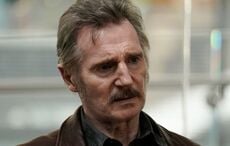Some people progress through life like a buzz saw. What they lack in tact or social finesse they can make up for in sheer ambition or nerve.
That thought occurred to me watching Scarlett Johansson as Maggie in the first act of Cat on a Hot Tin Roof by Tennessee Williams, now playing at the Richard Rodgers Theatre on Broadway.
From the beginning Johansson speaks in an unaffected Southern rasp that rarely variates in tone, and is a million miles from the usually willowy female leads that populate Williams’s plays. It’s a startling opening gambit for a production that wants to put the reality back into the classic drama.
But the trade off, in Johansson’s case, is that the buzz saw predominates and the more lyrical (and all of the comedic) aspects of the role evaporate.
She’s not funny, she’s not particularly poetic. Instead she’s enraged and frightened and she has only one goal in sight, to protect her future with her husband Brick by seeing off all challengers to Big Daddy’s $10 million fortune.
As Big Daddy, the dying patriarch who controls the purse strings and consequently the destinies of everyone around him, Belfast’s Ciaran Hinds has also redefined a familiar role. Unlike Johansson, though, Hinds has not cast off crucial elements of his character.
Instead, and sometimes shockingly, he mines the text for its emotional center, and the payoff is so immense that the audience is rattled by the intensity of his performance.
At the heart of Cat on a Hot Tin Roof is the question, what do we live for? And when the dream of life is over, the play asks, what will sustain us as we go on?
For Big Daddy’s son Brick, the dream of life was his deep friendship with his high school friend Skipper. But as questions arise about the true nature of that friendship, most ferociously from his wife Maggie and Big Daddy, it becomes clear that the gulf between how things look and how they are has become too wide, threatening Brick’s happiness and driving him to drink.
Benjamin Walker makes the same choice to play the reality of his character Brick, rather than the walking wound he could be. This serves the play and the actor well, pulling the rug from under our expectations.
Walker and Hinds in particular light up the stage, circling each other without saying what they really mean until it erupts in conflict that neither heals nor helps.
It seems certain that most critics will howl with dismay over the severity of this production, which takes an axe to the decades of frozen adoration it has basked in, in search of what is enduring and true.
Johansson’s rather charmless, humorless Maggie will not play to the gallery or the critic’s box, but in the end she does serve the play well.
Her terror is real enough and so is her disappointment, but most of all she finds the sheer animal determination to survive inside of her and those aspects of her character are central to this work.
There are of course certain problems that the play, Williams’s most enduring masterpiece, presents to contemporary actors. It’s 58 years old for a start, and in all that time it’s become over familiar, an opportunity for the worst kind of showboating actors to play it for laughs, missing all the poetry and heartache lurking in each line.
Johansson’s brittle performance in the role that was made famous by Elizabeth Taylor in the 1958 film of the play, is poles and decades apart from Taylor’s.
But Taylor’s legacy (she starred alongside Paul Newman) has defined the role for decades, and Johansson does battle with it by becoming something less (recognizably human) and something more (possessed by an anvil brain).
She’s the buzz saw at the top of the play and at its conclusion. You may not like, but you’ll admire the hell out of her life force.
Hinds has found an unlikely vehicle for his talents, and gives a performance that seems to startle itself with its own passion. That’s quite a trick and you can expect to be rattled by it.
The victory of a cat on a hot tin roof is just staying on it, and it’s his.




Comments